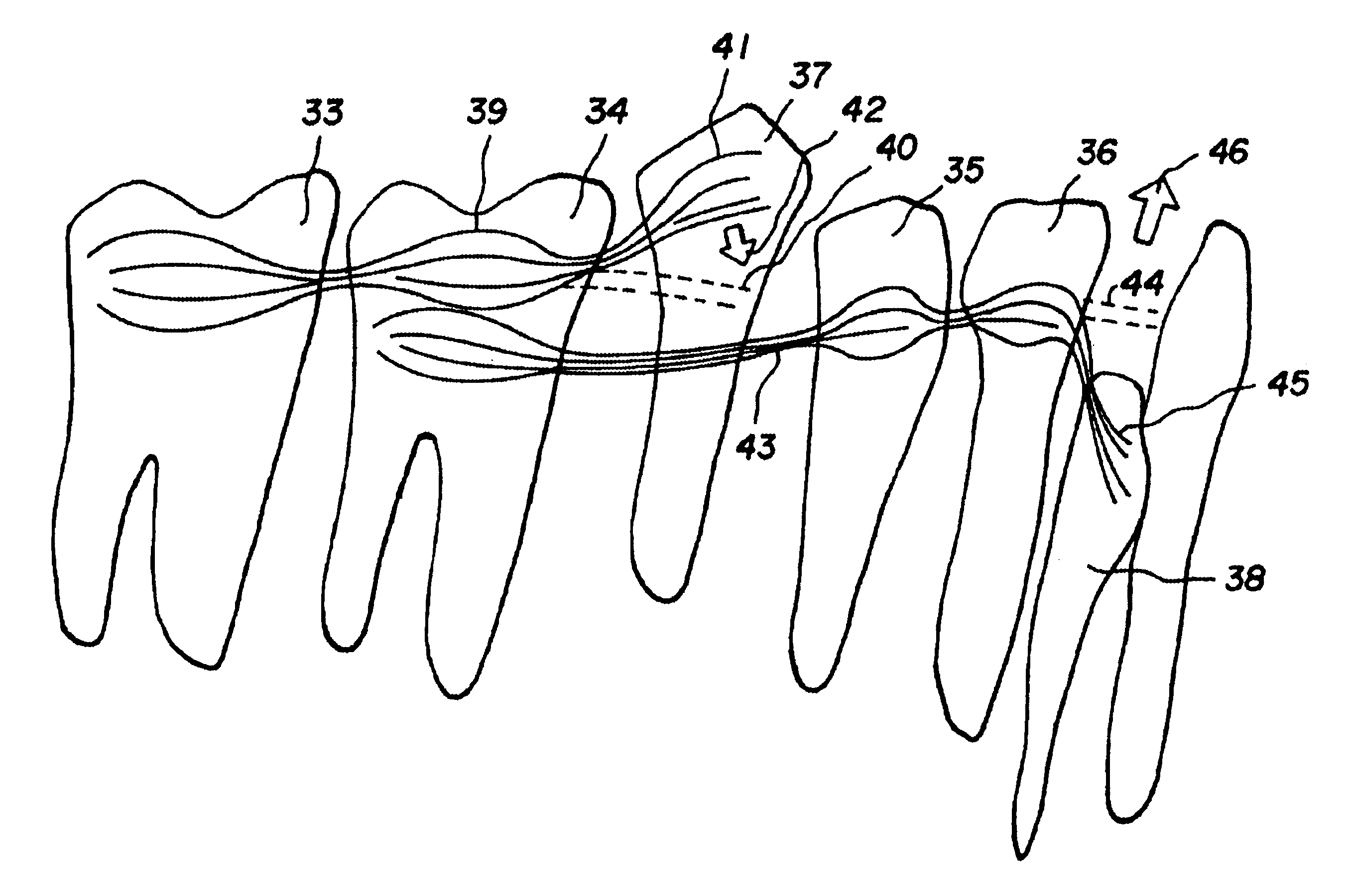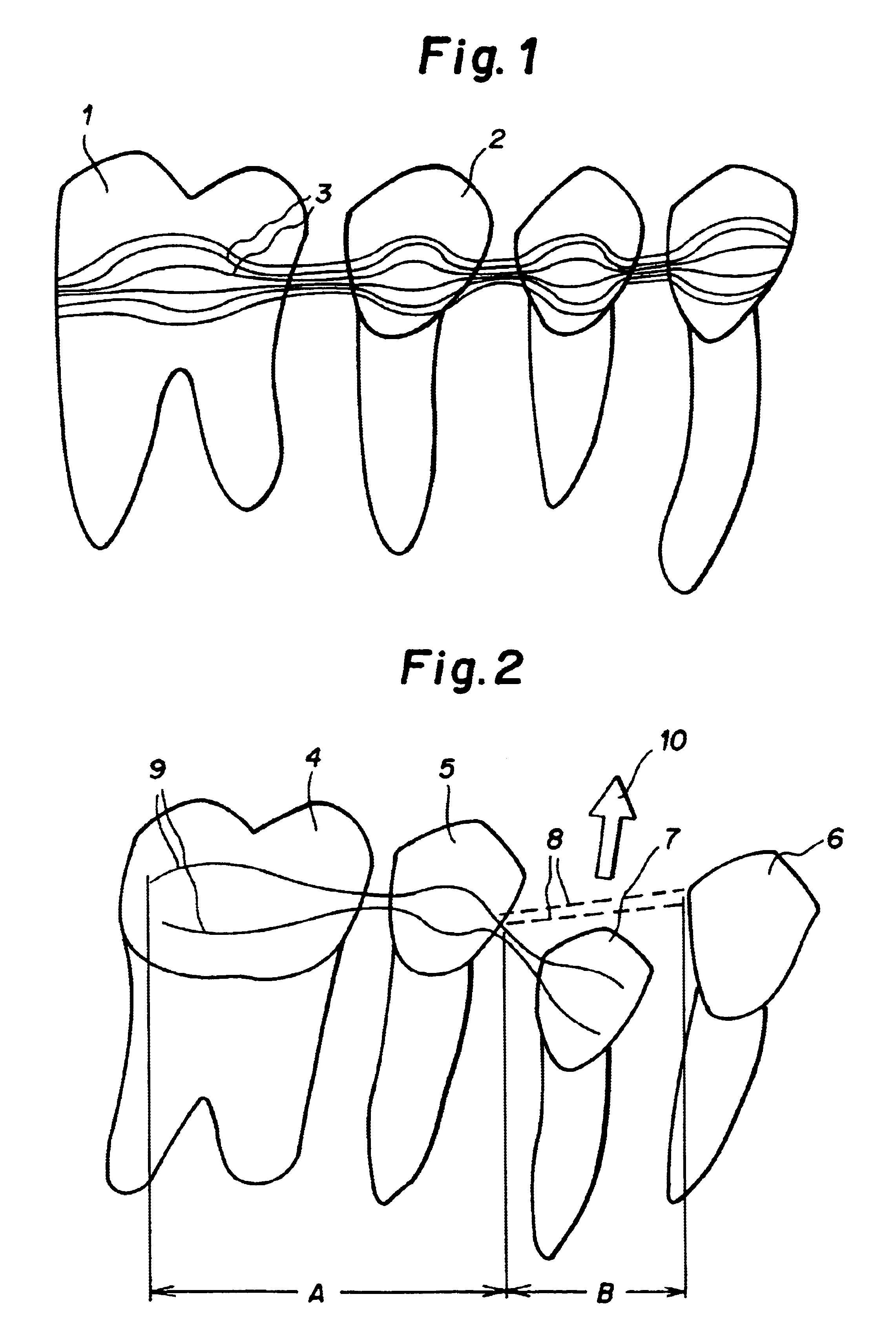Orthodontic appliance
a technology for orthodontic appliances and brackets, applied in the field of orthodontic appliances, can solve the problems of difficult adhesion of high-strength metals and ceramics to the tooth surface, poor appearance of the appliance, and frequent loosening of the brackets from the tooth surface, etc., to achieve simple, reliable and aesthetic structure, and maintain good oral hygiene
- Summary
- Abstract
- Description
- Claims
- Application Information
AI Technical Summary
Benefits of technology
Problems solved by technology
Method used
Image
Examples
example 2
A bar of OrthoStick.RTM. polymerized as in Example 1 having a diameter of 0.5 mm was fixed from the first end to a cantilever jig. The second end of the bar was deflected to a distance of 4 mm from the first end, the span being 10 mm. The deflection was kept constant over the measurement time. The experimental arrangement is shown in FIG. 9, wherein 47 illustrates the cantilever jig, 48 the bar to be tested, 49 is the span (10 mm), 50 is the deflection (4 mm) and 51 is the force F.
During the first 15 min, the force (F) was creeping from 1.7 N to 0.9 N, after that the load was stabilized to 0.9 N for 60 minutes.
Commonly used nickel-titanium orthodontic wire having a rectangular cross section (0.4.times.0.4) produced in the same test condition a force (F) of 0.6 N.
The fiber composite materials tested are thus suitable for use in the inventive appliance.
PUM
 Login to View More
Login to View More Abstract
Description
Claims
Application Information
 Login to View More
Login to View More - R&D
- Intellectual Property
- Life Sciences
- Materials
- Tech Scout
- Unparalleled Data Quality
- Higher Quality Content
- 60% Fewer Hallucinations
Browse by: Latest US Patents, China's latest patents, Technical Efficacy Thesaurus, Application Domain, Technology Topic, Popular Technical Reports.
© 2025 PatSnap. All rights reserved.Legal|Privacy policy|Modern Slavery Act Transparency Statement|Sitemap|About US| Contact US: help@patsnap.com



